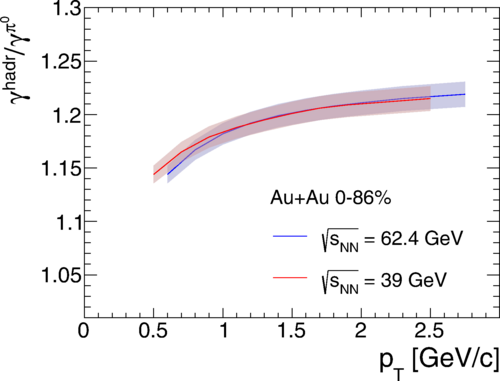Colliding Gold Atoms Supports Universal Scaling Law, PHENIX Group Receives Editor's Choice
The PHENIX (Pioneering High Energy Nuclear Interaction eXperiment) collaboration has yielded insights into the behavior of photon production. Using the Relativistic Heavy Ion Collider (RHIC) at Brookhaven National Lab, gold atoms were slammed into each other to measure how many photons were produced.
An animation depicting a simplified view of how the RHIC functions. A brief depiction
of the PHENIX experiment can be seen starting at 1:00. Brookhaven National Lab, RHIC.
The experiment discovered evidence of a universal scaling law: the photons generated by these collisions behave similarly regardless of how fast the gold atoms were moving before the collision!
 The figure above demonstrates the experimental results. The fit seeks to find an accurate
value for the scaling relation (the value along the y-axis) as a function of the momentum
along directions perpendicular to the collision motion (x-axis). The agreement between
two collisions with different energy is evidence for the universality of the relation
-- the same behavior for the produced photons is seen regardless of how energetic
the collision is.
The figure above demonstrates the experimental results. The fit seeks to find an accurate
value for the scaling relation (the value along the y-axis) as a function of the momentum
along directions perpendicular to the collision motion (x-axis). The agreement between
two collisions with different energy is evidence for the universality of the relation
-- the same behavior for the produced photons is seen regardless of how energetic
the collision is.
The article, selected to be an Editor's Suggestion, was published in the journal Physical Review C, and can be found here.
